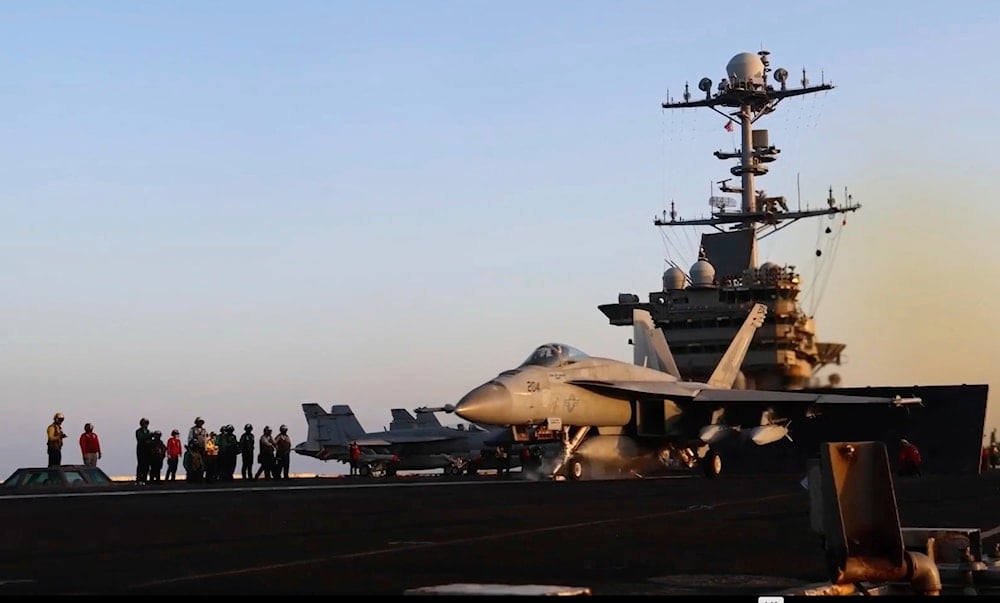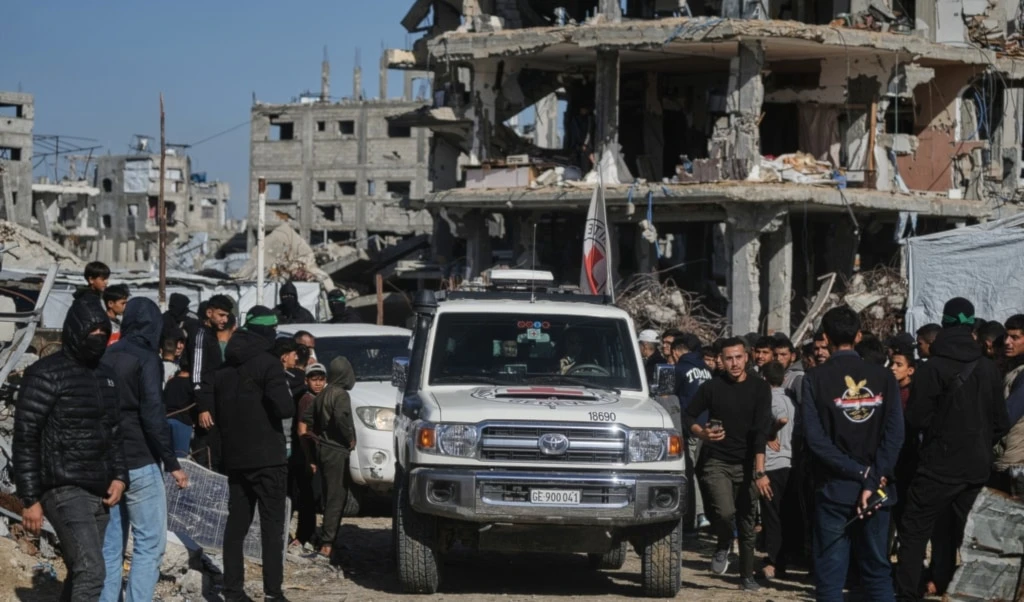Low-Cost Ansar Allah weapons undermine expensive US military assets
Ansar Allah's low-cost missiles are exposing a growing cost imbalance in modern warfare, downing expensive US drones and straining Western defense budgets, Ynet reports.
-

This image taken from video provided by the U.S. Navy shows an aircraft launching from the USS Harry S. Truman in the Red Sea before airstrikes in Sanaa, Yemen, Saturday, March 15, 2025. (AP)
A growing imbalance in modern warfare is emerging as low-cost missiles fired by Ansar Allah are capable of downing high-value US drones, placing a heavy burden on Western defense budgets and intensifying the ongoing crisis in the Red Sea region, according to a report by the Israeli newspaper Ynet.
The stark disparity is highlighted when a missile estimated to cost $20,000 fired from Yemen manages to shoot down a US MQ-9 Reaper drone valued at over $30 million, according to Ynet. This trend signals a troubling shift in the economics of modern warfare, as relatively inexpensive weapons cause substantial financial damage to Western militaries.
This cost imbalance lies at the center of recent developments in the Red Sea, where continuous operations by Ansar Allah have disrupted critical global trade routes and forced the West to commit significant resources to maintain maritime security.
The report notes that “the United States has carried out more than 800 airstrikes on targets in Yemen since March 15, yet the barrage of drones and missiles has not stopped.”
It adds that “as the Houthis continue to target ships linked to the United States, the United Kingdom, and Israel in one of the world’s most critical maritime corridors, military and economic pressure on the US and its allies is mounting, with no end in sight.”
Asymmetric warfare and financial attrition
Jonathan Schanzer, a research analyst at the Foundation for Defense of Democracies, described the Ansar Allah operations as inherently asymmetric. “There’s no need to cause massive casualties; it’s enough to make your opponent bleed financially,” he explained.
According to Schanzer, Iran has shifted its strategy, no longer sending complete missile systems. Instead, it supplies components such as spare parts, drones, guidance systems, and warheads, and then these are assembled by Ansar Allah in Yemen. “This modular approach makes interception more difficult and ensures a steady supply chain,” he said.
Western defense budgets strained
Retired British Colonel Richard Kemp argued that the growing cost imbalance is unsustainable, noting that intercepting a single missile or maintaining naval operations requires millions of dollars, while the attacking drones cost only a fraction of that.
Both Kemp and Schanzer criticized the West’s strategy. Kemp particularly faulted Washington’s response under the Biden administration, pointing to what he described as a strategic misstep in delisting Ansar Allah as a terrorist organization. He claimed the move was aimed at placating Iran but ultimately enabled the current escalation.
Schanzer echoed the concern, stating that aerial bombardment alone would not resolve the conflict, given Iran’s ongoing military support. He framed the situation as a cycle of destruction and regeneration, where “for every missile facility destroyed or commander eliminated, Ansar Allah rebuild and replace.”
With continued logistical and tactical backing from Iran, Schanzer warned that this cost-driven conflict could persist indefinitely, posing long-term strategic and economic challenges for the US and its allies.

 3 Min Read
3 Min Read








